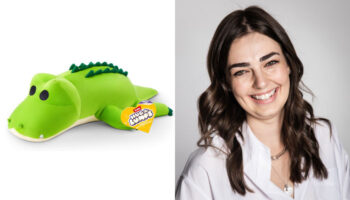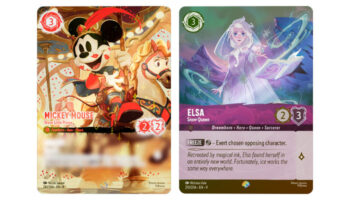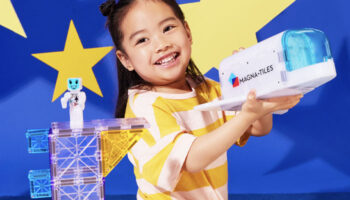Open 2 Design’s Matt Burtonwood on the origins of Rubik’s Cage
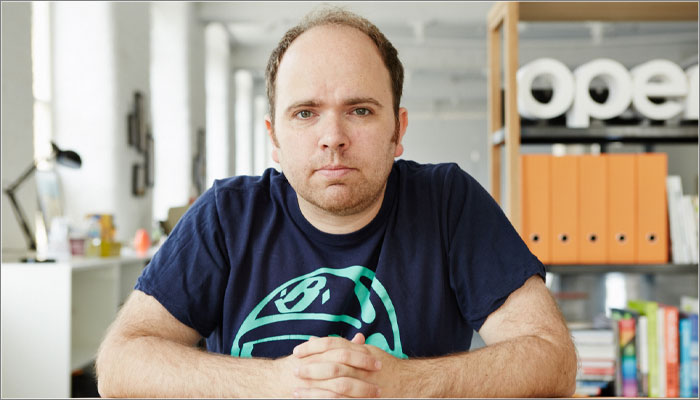
Last year, Mojo Nation partnered with Rubik’s to host one of its Design Challenge events. These see designers tasked with creating concepts for a brand, before pitching their ideas directly to the licensor in the hope of bringing new product to market.
The Rubik’s Design Challenge saw a selection of designers given two weeks to develop game concepts based on the iconic Cube, before pitching them directly to the Rubik’s team.
Matt Burtonwood and Ben Williams of Huddersfield-based design studio Open 2 Design came to the Challenge with an array of concepts, including the twisty 3-in-a-row game, Rubik’s Cage. The game sees players take turns inserting Cubies into the Cage. Other players can twist or turn the Cage to reset the playing field, and the first with three of the same colour Cubies in a row wins.
The Rubik’s team loved the concept, and it’ll be hitting shelves in July courtesy of University Games.
We caught up with Burtonwood to learn more about where the idea came from for Rubik’s Cage, and whether the constraints of a Design Challenge event helped or hindered his creative process.
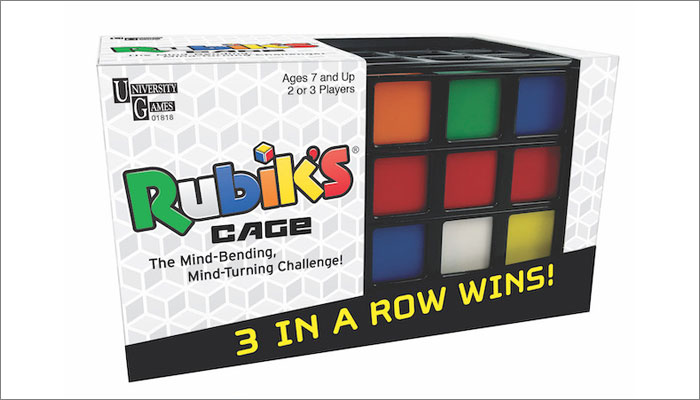
Can you talk us through where the idea came from for Rubik’s Cage?
We initially pitched Rubik’s a variety of ideas, with the intention of giving them something from the simple to more complex.
We wanted to focus on what we saw as the core DNA of the original Cube, specifically the colours of the original cube and the tactile nature of the play pattern.
The Cube is a really tactile thing, whether you’ve solved it or not everyone will know the feeling of rotating the cubies around. So we had a good feeling that if we could incorporate that kind of feature, we might have something.
Then it was a case of stepping back and taking a look at how we could re-imagine the tiles or cubies before combining the two elements together and that became Rubik’s Cage.
Did the constraints of the Design Challenge help or hinder the design process? Or make no difference at all!?
I think the most important thing the Design Challenge gave us was a deadline. We’re still very much a work for hire agency, and the vast majority of our work involves partnering with toy companies to help come up with and deliver great products. So setting aside time to develop ideas like this can be hard without a deadline.
On the one hand, it can be easy to put things off as you focus on the thing that’s currently in your headspace. The other danger is that you over work things and noodle it if you don’t put a hard stop on things. So the structure of the challenge always helps to give things a focus.
Does your approach to game design change much when dealing with a brand vs. original concepts?
Not really. At the core of a good item – branded or otherwise – there has to be a good idea. Without that spark it won’t work. Working on original concepts gives an amount of freedom to come up with a play pattern that might not fit a property or licence, but equally sometimes it’s good to have some boundaries to think within – but it’s all about the idea.

How do you fuel your creativity?
We kind of employ a conscious and unconscious approach to creativity.
The conscious side of things tends to be driven by pressure. We set aside specific amounts of time to consciously think around an idea, theme or brand. It’s not always specifically a workshop or ideation session. It might be that we just set a date to review ideas. I guess it’s going back to that idea of a deadline and focus.
On an unconscious level, it’s about switching on your brain to be open to ideas – you’re kind of thinking about everything, all of the time! So you might see a mechanism in a household appliance that could create a really cool play feature – but you kind of have to switch your brain on to make that leap and see the potential. It’s like Pinterest, but in your head, and is less about cool images and more about ideas.
So that, and coffee. Screen breaks help too. It’s important to walk away from things and come back to them. Often when you walk away it gives you an opportunity to find a new way into looking at a problem. If you keep looking at the same thing, you’ll keep doing the same thing.
Finally, are you any good at solving the Rubik’s Cube?
I think as a child I remember peeling the stickers off my brother’s Rubik’s Cube. They didn’t come off cleanly and I made a real mess of it. I don’t think that counts, does it? Luckily there are no stickers with Rubik’s Cage.








